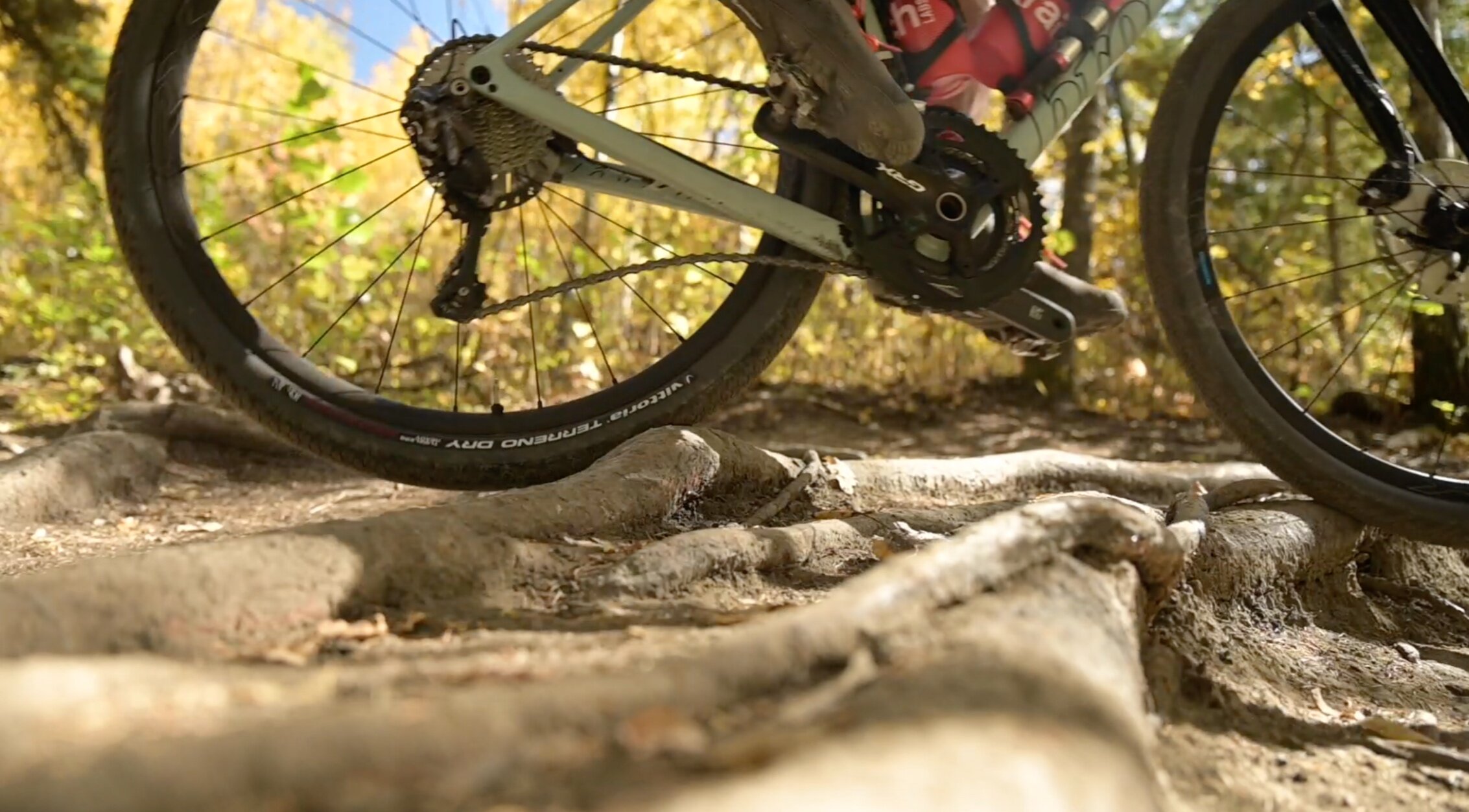650b or 700c - what does it all mean?
Alex Stieda was the first North American to wear the yellow jersey at the Tour de France in 1986.
By Alex Stieda
By now, I'm sure you've heard and seen all the buzz about frames that can accommodate 650b and 700c wheels. Some framesets can even work with both. What does this really mean for you as a gravel racer?
Since this Spring, I've been riding a 2020 Brodie Romax carbon frame that can use either 650b or 700c wheels. I've spec'd it with a mix of Shimano Di2 Ultegra, GRX double chainring and Ultegra hydro brakeset (160mm front, 140mm rear). My 650b wheels are Shimano GRX. 700c wheels are Shimano aluminum/carbon RS.
On the 650b wheels, I've fitted Vittoria Terreno Dry 47mm tires. On the 700c wheels, I've tried both the Vittoria Rubino Pro 28mm and Vittoria Terreno Dry 33mm tires. I used them with a tubeless set up (with Vittoria PitStop TNT sealant) as well as tubed.
What you need to know!
Like and Subscribe on YouTube!
Whether you're on 700c or 650b wheels, tire selection is crucial. Equally as important is tire pressure. A digital tire gauge is STRONGLY recommended as many foot pump gauges are not accurate at all, especially at lower pressures. Rider and bike total weight should also be considered when setting optimal tire pressures. I'm in the 160 lb range and my Romax fully loaded with 2 large water bottles & full spares bag is in the range of 25 lb.
Riding on mixed gravel roads where the gravel is loose from recent grading or grooved from heavy vehicle traffic, the 47mm tire setup was far superior. The wheels tracked really well where I pointed the steering without the 'pull' of car tires tracks or looser sections of gravel. Additionally, I didn't have to be near as particular about choosing a line. The tire simply drove through the obstacles. I was unsure about increased rolling resistance when riding on pavement with a 47mm tire but with the Terreno Dry center tread being very minimal, I rolled along just fine. At first I ran 40 psi (front/rear) but was getting bounced on the rougher gravel so reduced to 35 psi which made all the difference. I’ve recently been pushing the envelope on these 47mm tires running them in the 20 psi range on especially rugged terrain including rooted single track. The lower pressures act as suspension and really take the edge off of sharp hits. Running tubeless at these lower pressures was critical to avoid snakebites on a tubed setup. The 650b x 47mm (11x36 Ultegra cassette, brake discs and sealant) wheelset weighed in at 3,600 grams.
Routes that have a higher mixture of pavement to gravel, the 700c x 33mm Terreno Dry has been a better option. Running these tires in the range of 40-45 psi seemed to work well for me.
That said, bike handling skills need to be stronger as you do need to avoid the larger holes and divots to either not pinch a tubed tire or dent a tubeless rim. The 700c 33mm (11x34 Ultegra cassette, brake discs and sealant) wheelset weighed in at 3,240 grams.
If a route is hillier and has pavement and hardpack gravel roads, then I'd highly recommend going to a 700c x 28mm tire with added sidewall protection such as the Rubino Pro. I raced this tire at the 2019 Belgian Wafer Ride (125km vs 210km!) with good success using my road shoes, although I could have used a few more miles in my legs before May 5!
Overview:
· Newer gravel riders would benefit from a larger tire profile such as the 650b x 43/45/47mm setup) which allows you to ride more confidently in loose terrain.
· Riders with more skill or gravel racing in mind, would want to use the 700c x 28mm combo. A 700c x 33/35/37mm could be ideal for general riding on hardpack gravel with pavement sections. A 700c x 42mm combination can work with some framesets and would be used for harsher terrain if a 650b wheelset was not available.
· Tire selection and tire pressure are critical no matter which options you choose. Generally, tubeless tire pressures can be lower than tubed tires providing more traction without fear of pinching a tube while adding suspension properties. A digital gauge is HIGHLY recommended. Take into account the rider weight and fully loaded bike weight when calculating tire pressure.
· MTB shoes are usually recommended, however, some gravel race courses (such as Belgian Waffle Ride) do not have any hike-a-bike sectors so a lighter road shoe set up can be used.
· Ideally, 1 bike, and 2 sets of wheels are the ultimate choice!
There are lots of options as you can see. Your best bet is to work with your local pro shop and try different wheel sizes, tires and pressures.
Full disclosure, Alex Stieda is a product ambassador for Shimano, Lazer, PRO, Brodie, Castelli, Vittoria, Wheels Manufacturing & Skratch.


